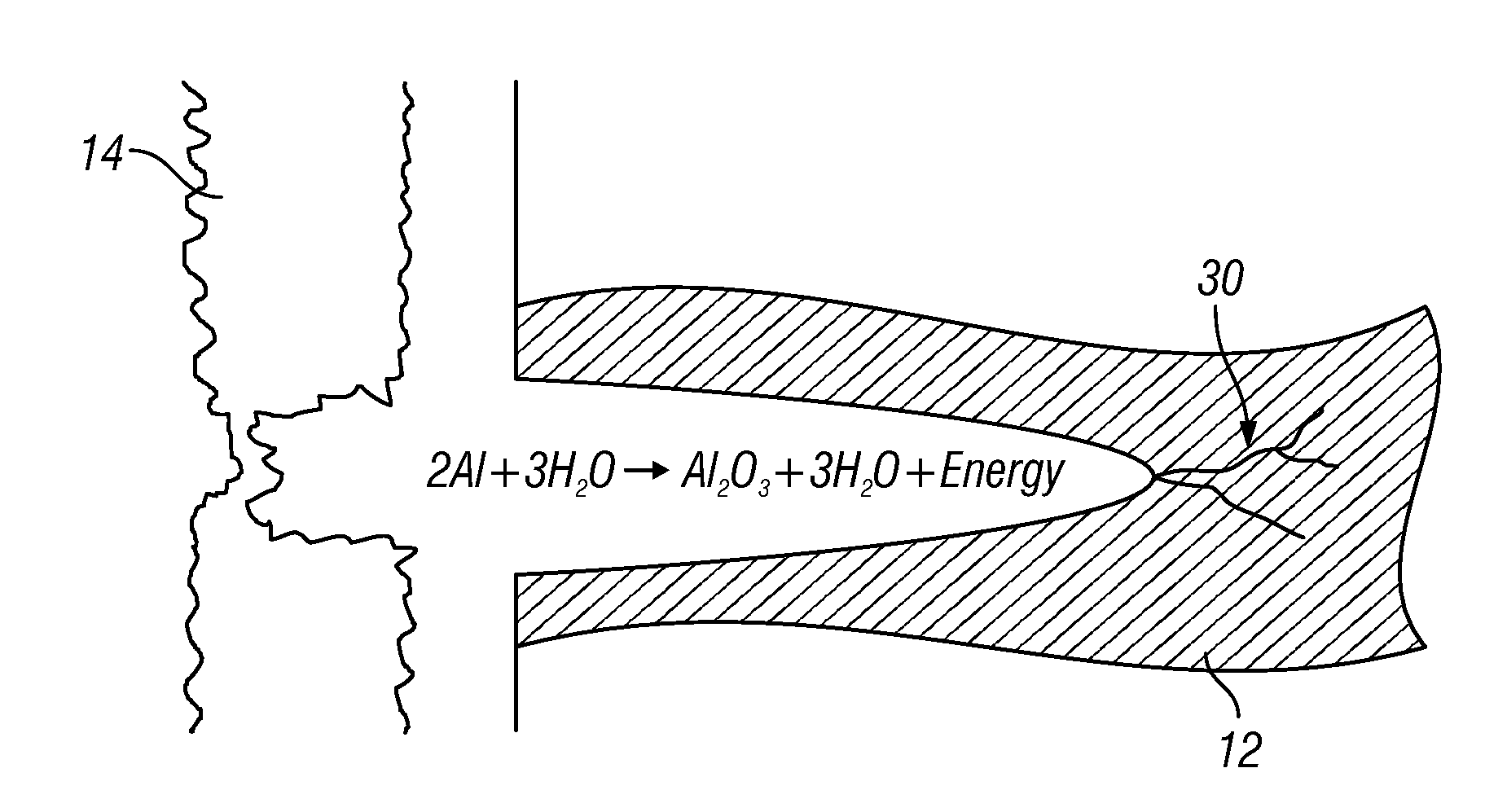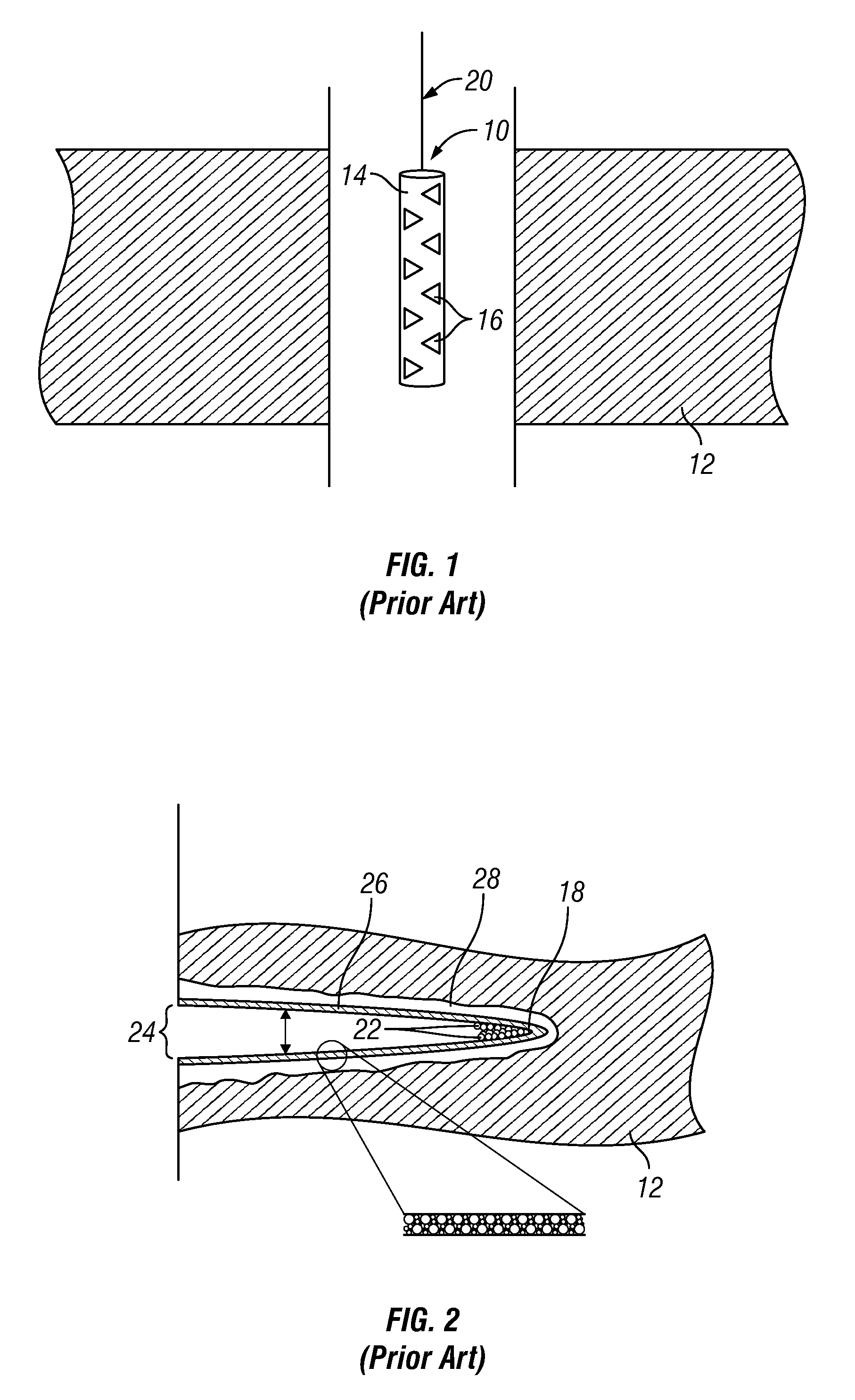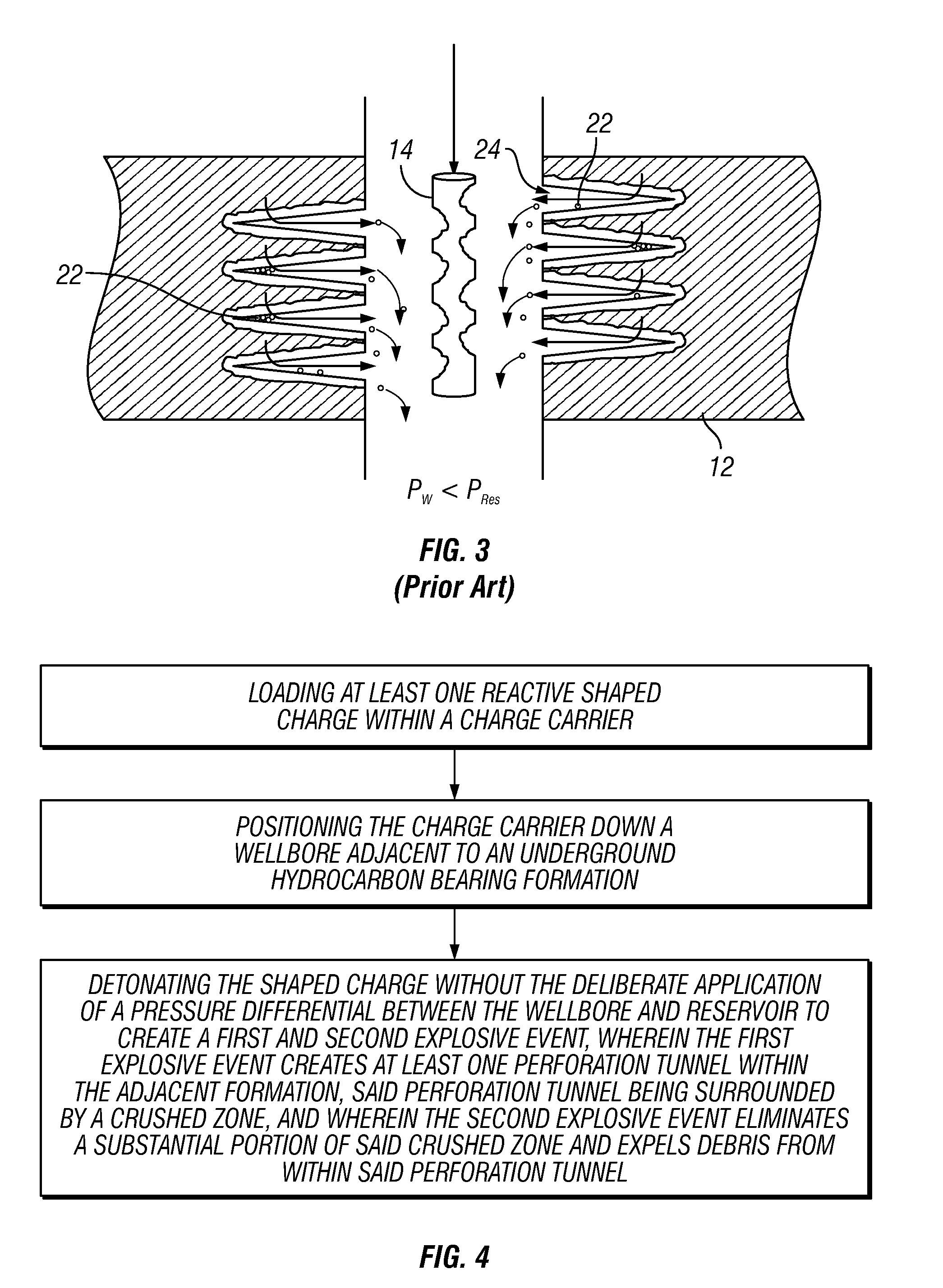Method for Perforating a Wellbore in Low Underbalance Systems
a wellbore and underbalance technology, applied in the field of reactive shaped charges, can solve the problems of undesirable movement of perforating tools up the wellbore, limited underbalance that can be applied in these situations, etc., and achieve the effects of improving inflow and/or outflow potential, superior inflow and/or outflow performance, and improving inflow and outflow distribution
- Summary
- Abstract
- Description
- Claims
- Application Information
AI Technical Summary
Benefits of technology
Problems solved by technology
Method used
Image
Examples
example 1
[0038]Laboratory studies comparing the productivity of perforations shot at balanced and near-balanced conditions with conventional methods have shown that the present method consistently delivers 20-40% greater productivity (under single shot laboratory conditions), as shown by tests conducted following American Petroleum Institute Recommended Practice 19-B (API RP 19-B), Section 4. The results of one such program of tests are presented below with regard to FIG. 7, which depicts the comparative production rates for conventional and reactive shaped charges at varying balancing pressures in Berea sandstone at an effective stress of 4,000 psi. As used herein, the productivity ratio (kf / k) is the permeability measured when flowing through unperforated rock. The effective stress within a rock is equal to the total stress (σ) minus the pore pressure (pp). Total stress (σ) can be visualized as the weight of a water-saturated column of rock. Two components of that weight are the rock with ...
example 2
[0040]Table 1, depicts data generated using a 15-gram version of a reactive shaped charge into Berea sandstone. In addition to the improved productivity at near balanced conditions, the productivity improvement versus a conventional shaped charge is apparent under conditions ranging from 500 psi underbalance to 1000 psi overbalance.
TABLE 1PermeabilityPermeabilitymeasuredprior toafterProductivityBalancePen.perforationperforationRatioFlow Imp.Test #Charge(psi)(in)(mD)(mD)——1Conventional10009.20142600.422Reactive10008.201431060.7476%3Conventional5006.20106530.504Reactive5008.60106860.8161%5Conventional08.85130790.606Reactive09.051111020.9252%7Conventional−5009.05113880.798Reactive−5009.101401701.2255%
[0041]As seen by the above results, even in situations where no underbalance is used, or without the application of a pressure differential, the flow is improved by as much as 52%, where the productivity ratio for reactive shaped charges is as high as 0.92 in contrast with the productivity...
example 3
[0042]The field application of reactive perforators in wellbores where limited or no underbalance has been applied has shown that productivity is significantly improved over offset wells perforated in a conventional manner and / or compared to previous perforations in the same well using conventional equipment and methods. The results of five experimental programs conducted using a variety of sandstone targets under different conditions are summarized in Table 2. Some studies involved only API RP-19B Section 2 type testing, which evaluates perforation geometry in a stressed rock target but does not measure the flow performance of the resulting perforation.
TABLE 2Examples of Performance Comparison Test Programs betweenReactive Charges and Best-in-Class Conventional Deep Penetrating ChargesEffectiveAverageUnder-Clear Tunnel DepthLab ProductivityChargeUCSStressPorositybalanceImprovement withImprovement withTested(psi)(psi)(%)(psi)Reactive PerforatorReactive Perforator23 g11,0004,00011.71...
PUM
 Login to View More
Login to View More Abstract
Description
Claims
Application Information
 Login to View More
Login to View More - R&D
- Intellectual Property
- Life Sciences
- Materials
- Tech Scout
- Unparalleled Data Quality
- Higher Quality Content
- 60% Fewer Hallucinations
Browse by: Latest US Patents, China's latest patents, Technical Efficacy Thesaurus, Application Domain, Technology Topic, Popular Technical Reports.
© 2025 PatSnap. All rights reserved.Legal|Privacy policy|Modern Slavery Act Transparency Statement|Sitemap|About US| Contact US: help@patsnap.com



